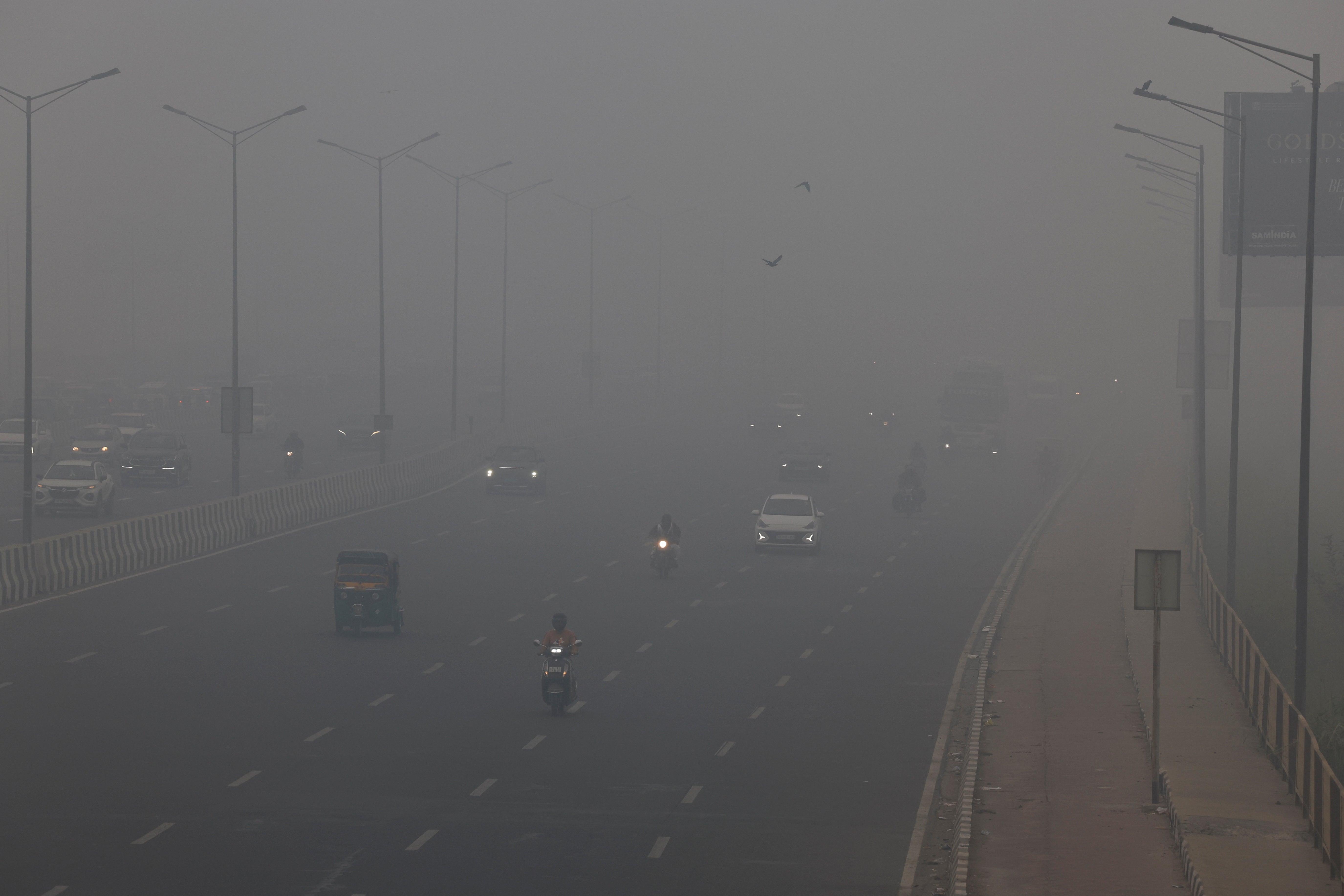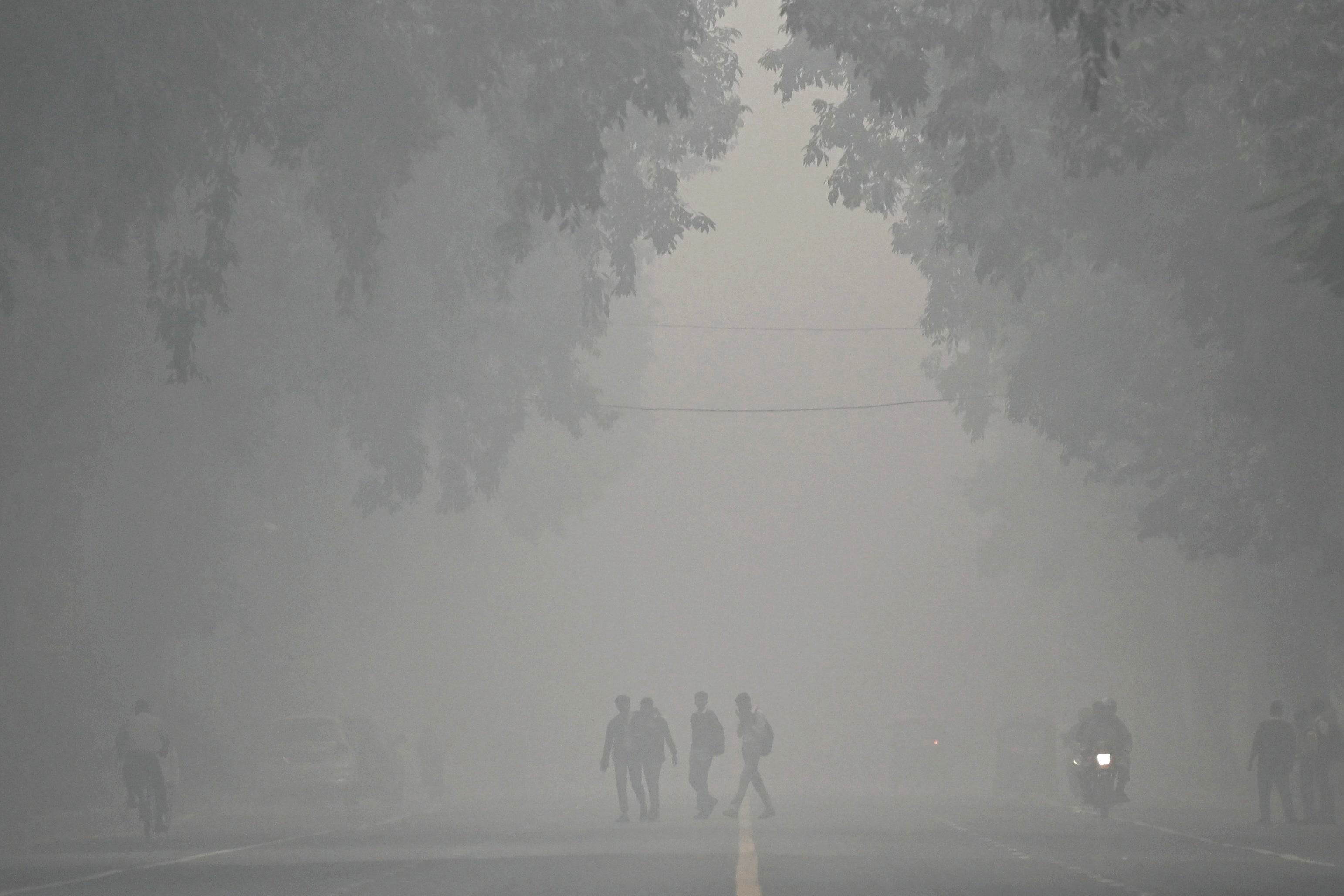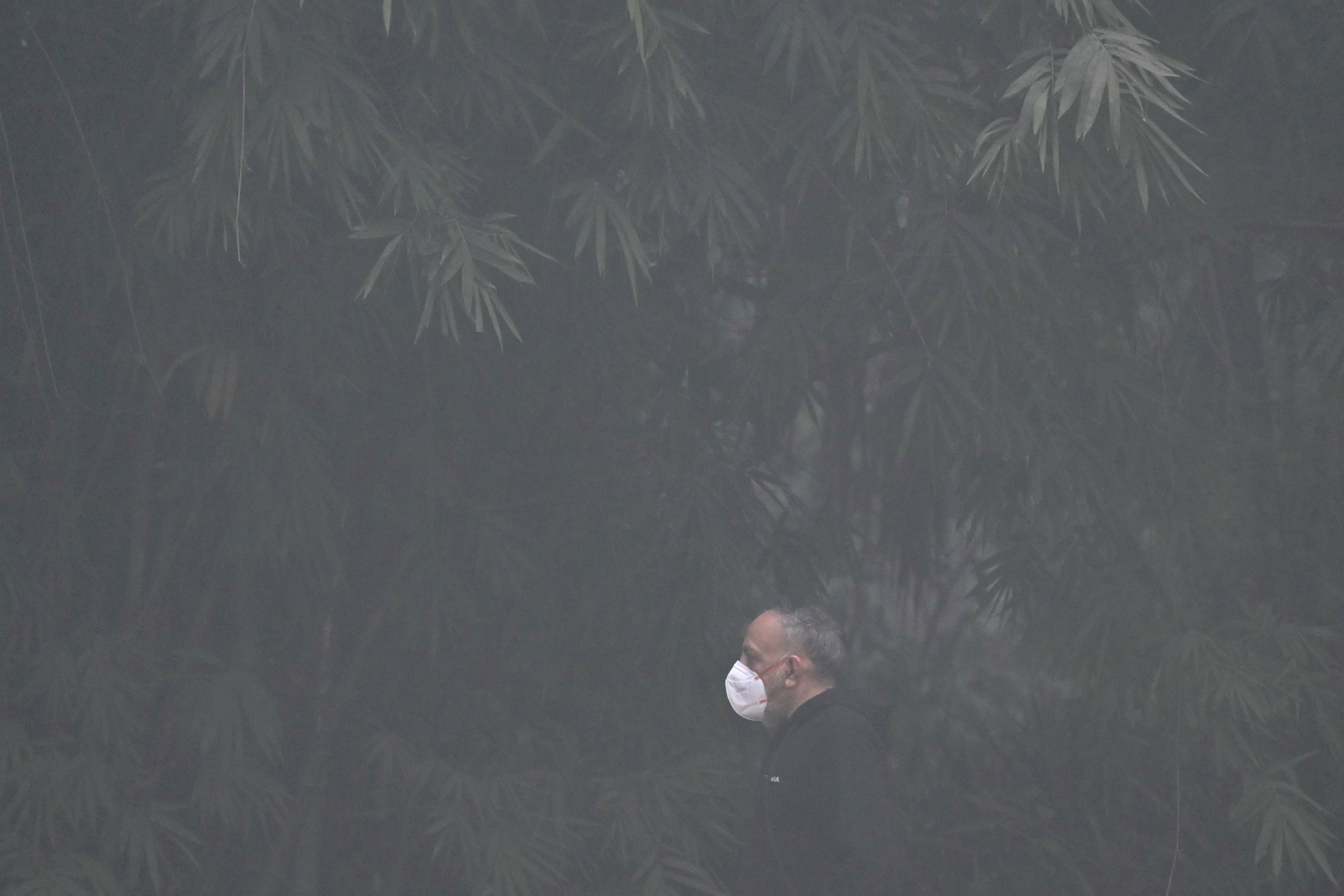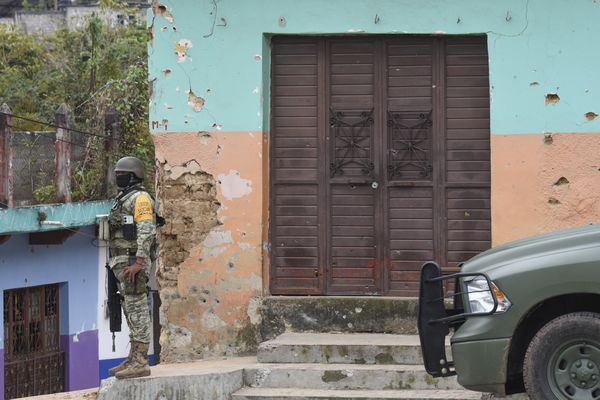Delhi’s government imposed the most stringent set of restrictions on the movement of vehicles and people as the toxic smog enveloping the Indian capital worsened on Monday.
The city’s average air quality index was 457 in the morning, beyond the “severe plus” category, according to government data.
The latest restrictions include a complete halt to construction activity, ban on diesel trucks, closure of educational institutions, and advice for offices to shift to work from home.
Children, senior citizens and those with respiratory, cardiovascular, cerebrovascular and other chronic diseases have been advised to stay indoors under the eight-point action plan introduced by the Commission for Air Quality Management.
The annual pollution crisis plaguing the city worsened over the weekend as air quality deteriorated to the worst level this year and a thick blanket of smog hung over the national capital region, home to more than 30 million people.
Many residents complained of an acrid smell in the air and a stinging sensation in their eyes and throat, associated with high levels of fine particulate matter in the air.
Rajiv Gupta, 54, and his wife, Manisha Gupta, 50, out for a walk in the Lodhi Garden in central Delhi said they have considered moving out of Delhi due to the worsening pollution.
“We come in the morning for fresh air and we are unable to get fresh air,” Mr Gupta said as he complained of a scratchy throat and breathing problems. “What’s the charm of coming to such a beautiful park then?”

According to IQAir, a Swiss Air Quality Index monitoring group, PM2.5 concentration in the air increased to 737 on Monday, nearly 150 times the World Health Organization limit, making Delhi the world’s most polluted city.
PM2.5 refers to tiny particulate matter with a diameter of 2.5 micrometre or less that can penetrate deep into the lungs and even enter the bloodstream.
Stage 4 of Delhi’s Graded Response Action Plan comes into effect when the air quality reaches the “severe plus” category, which is when AQI rises above 45. The latest restrictions are part of this plan.
The city has already activated the first three stages of the plan, to little effect on the ongoing crisis.

Delhi chief minister Atishi, who goes by her first name, said with the imposition of the stage 4, “physical classes shall be discontinued for all students, apart from Class 10 and 12. All schools will hold online classes, until further orders”.
Nearly 38 per cent of the pollution in Delhi this year has been caused by stubble burning—a practice of burning crop residue after harvest—in the neighbouring states of Punjab and Haryana, according to SAFAR, a weather forecasting agency under the ministry of earth sciences.

Government officials have blamed severe pollution combined with humidity, calm winds and dropping temperatures for the smog, with the Indian Meteorological Department forecasting these conditions and low wind speeds to persist until at least Saturday.
The smog has led to low visibility, affecting flight operations at the city’s main airport as well as train services.
“Fog is currently affecting visibility in Delhi, which may result in slow moving traffic and delays in flight schedules. We recommend allowing extra travel time and checking flight status before starting your journey,” Indian carrier Indigo said.
In the Palam area of the capital, visibility dropped to 150m at 5 am.







